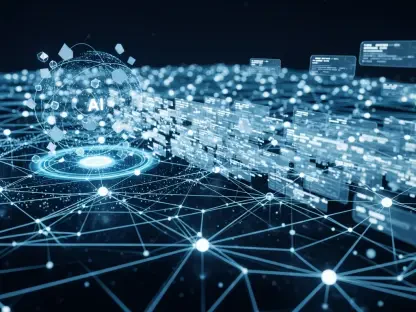Artificial Intelligence (AI) is transforming the financial industry at an incredibly fast pace. More and more banks, as well as fintech companies, are now adopting this technology to upgrade their core platforms, drive efficiency, and meet the ongoing demands of their customers. It is now an important part of banking workflows: From fraud detection and loan approvals to customer service and risk management.
But with this transformation moving so quickly, one important question follows: Are AI-powered banking platforms safe? Given that cyber threats are continuously evolving and generative AI is now widely weaponized by scammers for their own agendas, this is not a rhetorical question—the answer matters to security, trust, and long-term success. While it provides numerous opportunities in banking, finance, and fintech, it also comes with risks.
Financial institutions around the world must work to find the balance between exploiting AI’s potential and safeguarding data, systems, and customers. This article provides readers with insight into whether the use of AI in banking means a leap forward or a crisis just waiting to happen.
Redefining Banking Challenges With AI Innovation
The financial industry is now facing multiple challenges: sophisticated regulatory demands, increased fraud risks, fierce competition, and evolving customer demands. AI is turning into a formidable instrument for banks and fintech companies that hope to solve these problems.
By analyzing vast amounts of data, automating repetitive tasks, and forecasting behaviors, the technology is changing the way financial institutions work.
Today’s modern banks have to evolve constantly to keep pace with new technologies and remain relevant in the sector. However, these institutions also use AI solutions to simplify tasks like creating new products and services and to adapt to their customers’ needs. Streamlining back-office processes is also important, and banks and fintech companies often save time and cut operational costs by using AI-powered tools.
In addition, these organizations rely on AI-powered tools to customize user experiences, simplify their decision-making process, and improve operational flexibility. Not only do these capabilities drive profitability, but they also give banks and fintech companies the ability to rapidly respond to the demands of an ever-changing digital world.
Case Study: How Backbase Launched Its New AI-powered Banking Platform
In April 2025, Dutch fintech company Backbase launched its new AI-powered banking platform. With features like Intelligence Fabric and Agentic AI technology, the platform promises to shift banking from mere experimentation to full execution powered by AI.
Backbase CEO and Founder Jouk Pleiter explained that the new platform “isn’t proof-of-concept AI. This is a packaged, production-ready operating model to move banks from experimentation to execution, fast. AI waits for no bank. It’s not a wait-and-see—it’s here, now, and it’s rewriting the rules of the industry. The time to act is now.”
Backbase’s strategic move is clear, and it underlines an important transformation in the financial services industry. Banks and fintech companies are not taking a wait-and-see approach to adoption, they are already employing AI solutions to drive their day-to-day operations. This decision arises from the requirement to keep up relevance in a changing digital world, where efficiency is king. Banks and fintech companies need these tools to improve the customer experience, moving past chatbots and adapting different processes.
From Theory to Practice: AI in Everyday Banking
AI use in banking grows quickly. While complete solutions like Backbase’s platform are rather new, tools like Microsoft’s Intelligent Data Platform already provide financial institutions with a flexible solution that can help them centralize data, improve security, and boost innovation. Here are three common use cases:
Fraud Detection
One of the things AI is especially good at is spotting fraud. Machine learning models can analyze customer transactions as they happen and pick up on any behavior that does not look right with a great deal of accuracy. When used with platforms like Microsoft’s Azure Cognitive Services, these tools can correlate data from different channels for an effective risk evaluation.
Accelerating Loan Approvals
Traditional credit scoring often fails to examine clients’ financial situations accurately. AI-powered tools can use different types of data to help financial institutions, and they can do this better and faster than ever before. Moreover, the evaluation can be more accurate, too. Banks using these solutions to make lending decisions can speed up loan approvals, ease the amount of paperwork needed, and make sure they comply with new regulations, all while giving customers what they need: better services.
Chatbots for customer support
Virtual assistants may have already transformed the way banks and fintech companies communicate with their customers. They do not sleep or take time off, and they can answer the same questions as human employees. Using AI-powered chatbots not only makes the job easier for the human support team, but it also provides customers with faster and better answers.
The Other Side of Innovation: New Risks in Banking
Although there are important benefits to using AI-powered tools like Backbase’s platform or Microsoft’s Intelligent Data Platform, they come with multiple risks for the banking sector. Major problems include:
Data privacy and effective security: AI solutions often require access to sensitive data, making them a target for hackers.
Regulatory compliance: Banks and fintech companies have to make sure their models follow all financial regulations to the T, despite frequent changes.
Outdated infrastructure: Numerous banks still rely on older computer setups. This makes it harder to employ AI-powered tools.
Talent gaps: Not many employees have AI skills. This means banks and fintech companies can struggle to create and maintain modern tools.
Bias: These systems learn to make decisions based on training data, which can include biased human decisions. It may be hard for banks to supervise these AI-powered tools and notice when this happens.
Another major concern is AI-based fraud. According to a Feedzai study, 92% of banks have seen fraudsters use this technology. Their methods include fake images, voice recordings, and messages.
Navigating the Future of AI-powered Banking
AI is undeniably reshaping banking: It is already helping banks and fintech companies to do things faster and better than ever before. By powering new software like Backbase’s platform, AI can help banks grow and evolve. Instead of simply experimenting, financial institutions are now rebuilding the industry with the help of these new tools. For example, AI-powered tools can accelerate loan approval, answer customer questions, and even detect fraud.
However, with great power comes great responsibility. Because these solutions rely on the use of data, pattern recognition, and automation, they can also be used to harm others.
So, are AI-powered banking platforms safe?
They can be, but banks and fintech companies will probably need to up their security, adapt to new regulations, and train their employees to use this and other new technologies. With hackers also adapting to these new tools, banks will need to be better prepared for fraud.
At the end of the day, AI is changing the way banks work, but it is also teaching the world what it means to be successful in the digital age. The key? Simply being adaptable to both challenges and opportunities.









